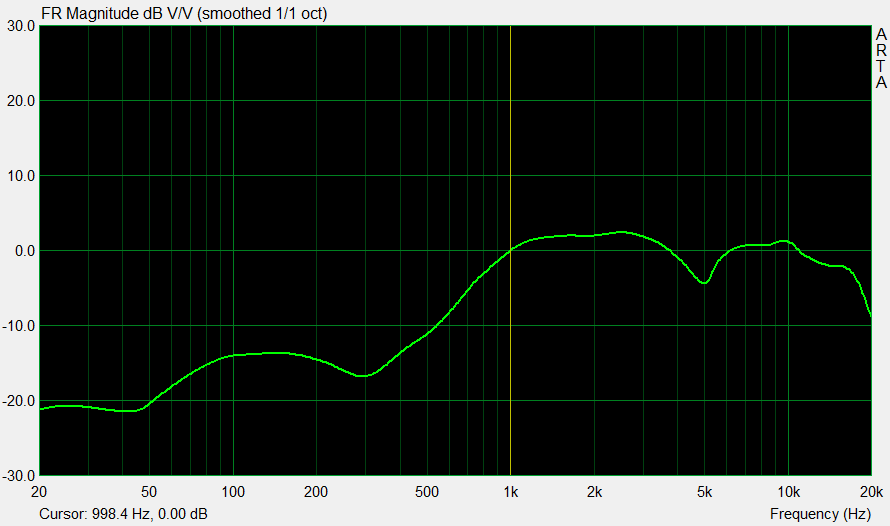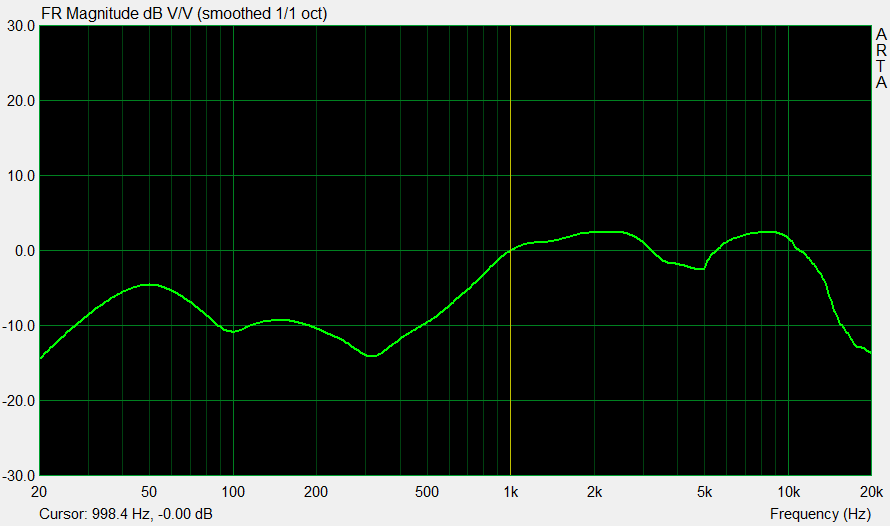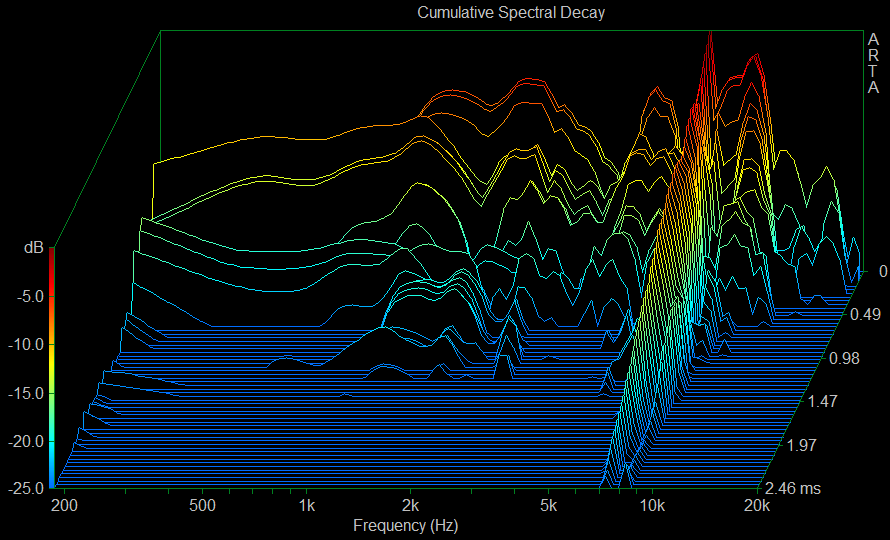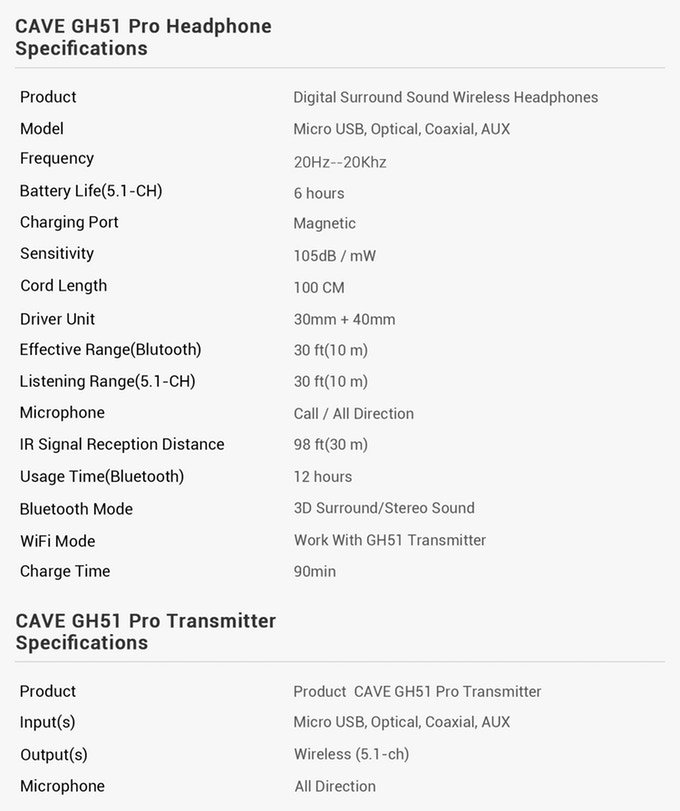Sound measurements
As I test, I have already explained in the basic article "Gaming Headsets: Myth, Truth and How We Test" in great detail and transparently, because with the usual audio chatter of bass thunderstorms and tweeter whips you can't really get any further. You have to be able to listen subjectively well and measure at the same time. But let's start with the latter.
Pure stereo playback without Dolby Pro Logic sounds relatively flat, because the large 40mm driver is obviously not included neatly. What comes out is a slightly flat sound, which drops sharply below a KHz already in the level. The artificial conversion of the stereo signal into a surround conglomerate brings more bass, but for the pure enjoyment of music this is nothing.

If you now use the real multi-channel playback, then there is also enough bass, which also sounds pleasantly natural and also offers an almost astonishing depth. Nevertheless, this is still far from a feisty bass bomber, but a rather restrained interpretation of the acoustic deep sea. You can also live with this, especially since the level strength is reasonably good.

The spectral decay analysis (CSD) curves provide further very useful information about the performance of the installed drivers. This analysis is based on the frequency response diagram shown above, but also contains the element Time and now shows as a 3D graphic ("waterfall") very clearly how the frequency response develops over time after the input signal has been stopped. In colloquial terms, such a thing is also called "end" or "swingout".
Normally, the driver should also stop as fast as possible after the input signal has been dropped. However, some frequencies (or even entire frequency ranges) will always subside slowly and then continue to appear in this chart as longer-lasting frequencies on the timeline. This is a good way to see where the driver might be particularly "squeaming" or where resonances may even occur and disturb the overall picture.

The small drivers can hardly afford to make mistakes here, only in surround mode is at approx. 7 and 8 KHz an unpleasant resonation audible, which I do not claw to the drivers, but the Pro Logic Gedöns, because here signals are simply falsified and new things are added that were not recorded in the original. Subjectively, this is rather a certain hissing, which you won't feel so disturbing in gaming, but sibilants of vocals almost pornously tacks into the ear.
Subjective listening experience
To make it short: Music can, but does not need/should. The situation is different when gaming or the insertion of real surround sources. The codecs do what they are supposed to do and the spatial effect of the Cave GH51 is much more pronounced than the virtual surround of any software solutions, especially since everything works perfectly even without additional drivers and calibrations. Gaming is doing surprisingly well, movies hardly lose any spatial transparency.
This can be written on the credit page. Also spooky combat hustle and bustle with very wide-band backdrops and whole battle panoramas are still depicted quite confidently, especially since the nimble drivers respond very quickly and precisely and also bring a certain level strength. But whenever even music-heavy phases dominate, the joy is quickly clouded. Would you rather buy a 150-euro stereo headphones and rely on software if necessary?
Actually, because if you have a little musical background, you will quickly notice the limitations of this system. With a cleverly coordinated DSP deployment, one could certainly still have easily counteracted.
Summary and conclusion
If it is to be a true multi-channel playback with different drivers per shell, then the Cave GH51 from Virtual Acoustic offers an interesting alternative to existing devices. Only the driver and registration requirement at the Razer Tiamat would probably deter me from buying, here you really don't have to do anything else to turn on the part. The headset also runs as a normal Bluetooth device on the smartphone or with transmitters at various, very different sources.
The truly comprehensive connectivity makes it a nice alternative, as long as you don't lose sight of the limitations. As convincing as the spatial reproduction is in places (that I would ever write this, i am amazed myself), the quality of a broadband music rendition at a higher level is so sick. The usual Schrammel-Mucke is just like that, but serious hearing is really a lot limited. unfortunately.
Whether or not you participate in the Kickstarter project is a matter of interpretation and interpretation. Curious people will surely be pleasantly satisfied if you are looking for a cinema or gaming headset for inflated effect content, alien snares and Terminator sound crackers. Subtle dramas and gently musically underscored elven swearing is rather not the thing of the Cave GH51, in which the Titanic would surely sink twice. First visually as usual on the screen and then also acoustically, when the good Céline sings in vain against the surround. Strudel, patsch, hiss and sweet! But at least beautifully spatial, that also has its charm.
But, to be fair, it is an ambitious project that shows very clearly that it could be possible if one does not want to over-bend the physical laws. And it doesn't have a bass boost, which creates a certain gratitude in me. In the past and present, things went much worse! That too must be said. And it's not everywhere that gaming is on, there's gaming in it. Here it fits at least to some extent.
Here again the link to the Kickstarter project


































Kommentieren